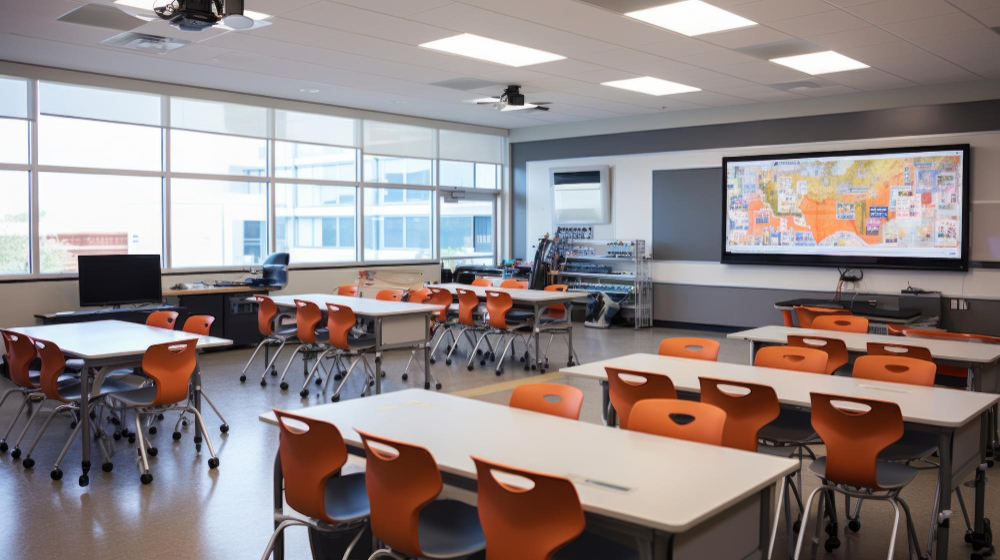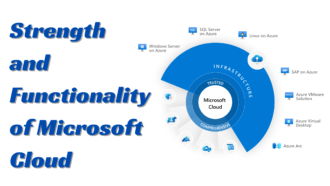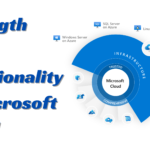Integrating Modern IT Solutions in Classrooms
- 1 Modern IT Solutions in Classrooms
- 1.1 Personalized Learning Through AI
- 1.2 Preparing for the Future: The Challenges Ahead
- 1.3 Virtual Reality: A New Dimension in Education
- 1.4 The Digital Classroom: Beyond Smartboards
- 1.5 Enhancing Collaboration with Cloud Computing
- 1.6 Using Data Analytics for Adaptive Learning
- 1.7 Gamification: Making Learning Fun
- 1.8 Building Digital Citizenship
- 1.9 Looking Ahead: Embracing Continuous Innovation
- 2 Wrap-Up
Education continues to transform, thanks in large part to the integration of modern IT solutions in classrooms. This revolutionary shift enhances the learning experience and prepares students for a future increasingly dependent on digital fluency. This article explores the innovative ways IT solutions are being integrated into classrooms, the benefits they bring, and the challenges educators face.
Modern IT Solutions in Classrooms
Personalized Learning Through AI
Artificial Intelligence (AI) in education is no longer futuristic but a present-day reality. AI technologies are being used to create personalized learning experiences for students. By analyzing data on students’ learning habits, AI can tailor the educational content to fit individual needs, thus ensuring that each student achieves their full potential.
Preparing for the Future: The Challenges Ahead
While integrating IT solutions in classrooms offers numerous benefits, it also presents challenges. Issues such as digital equity, teacher training, and ensuring the security and privacy of educational data are significant concerns that need to be addressed. Moreover, educators must balance technology with traditional teaching methods to avoid over-reliance on digital tools. For addressing these complex issues and seamlessly integrating technology into educational environments, external expertise in IT can be invaluable. Schools can benefit from consulting with specialists who offer IT Support & IT Services to ensure a smooth transition and operation of digital classrooms.
Virtual Reality: A New Dimension in Education
Virtual Reality (VR) technology offers unprecedented educational opportunities, providing immersive learning experiences that were once unimaginable. From historical reenactments to virtual field trips and complex scientific simulations, VR enables students to explore and interact with content in ways that deepen understanding and retention.
The Digital Classroom: Beyond Smartboards
Gone are the days when the height of classroom technology was the overhead projector. Today, digital classrooms leverage various tools, from high-speed internet and cloud computing to collaborative software and interactive learning platforms. These technologies are not just add-ons but fundamental components that enrich the educational experience by making learning more engaging and interactive.
Enhancing Collaboration with Cloud Computing
Cloud computing has revolutionized how educational content is accessed, created, and shared. Students and teachers can work on documents and projects simultaneously, regardless of their physical location. This seamless collaboration encourages a more connected learning environment, fostering student community and student teamwork.
Using Data Analytics for Adaptive Learning
Data analytics tools have become crucial in assessing student performance and adapting learning paths accordingly. By collecting and analyzing data from various online activities and assessments, educators can identify areas where students struggle and personalize the support they provide, promoting a more effective learning process for individuals.
Gamification: Making Learning Fun
The concept of gamification involves applying game-design elements in non-game contexts. This approach has proven effective in increasing student engagement and motivation in education. By integrating game mechanics like points, levels, and rewards into learning activities, educators can make the learning process more enjoyable and stimulating for students.
Building Digital Citizenship
As digital tools become more embedded in the educational process, teaching students about digital citizenship is vital. This encompasses understanding online safety, privacy, and the ethical use of technology. Educators are pivotal in instilling these important values, ensuring students become responsible digital citizens.
Looking Ahead: Embracing Continuous Innovation
The landscape of educational technology is ever-evolving, with new tools and approaches being developed rapidly. To fully reap the benefits of IT solutions in education, schools must stay on the cutting edge of this innovation, continuously exploring and integrating new technologies. This will enhance learning outcomes and ensure that students are well-prepared to thrive in a digital future.
Wrap-Up
Integrating modern IT solutions in classrooms transforms the educational landscape, making learning more accessible, engaging, and effective. As we navigate this digital era, educators, policymakers, and technology providers must work together to overcome the challenges and ensure that the digital classroom truly benefits every student. Embracing these changes prepares students for the future and enriches their learning experience, making education a truly transformative journey.


















